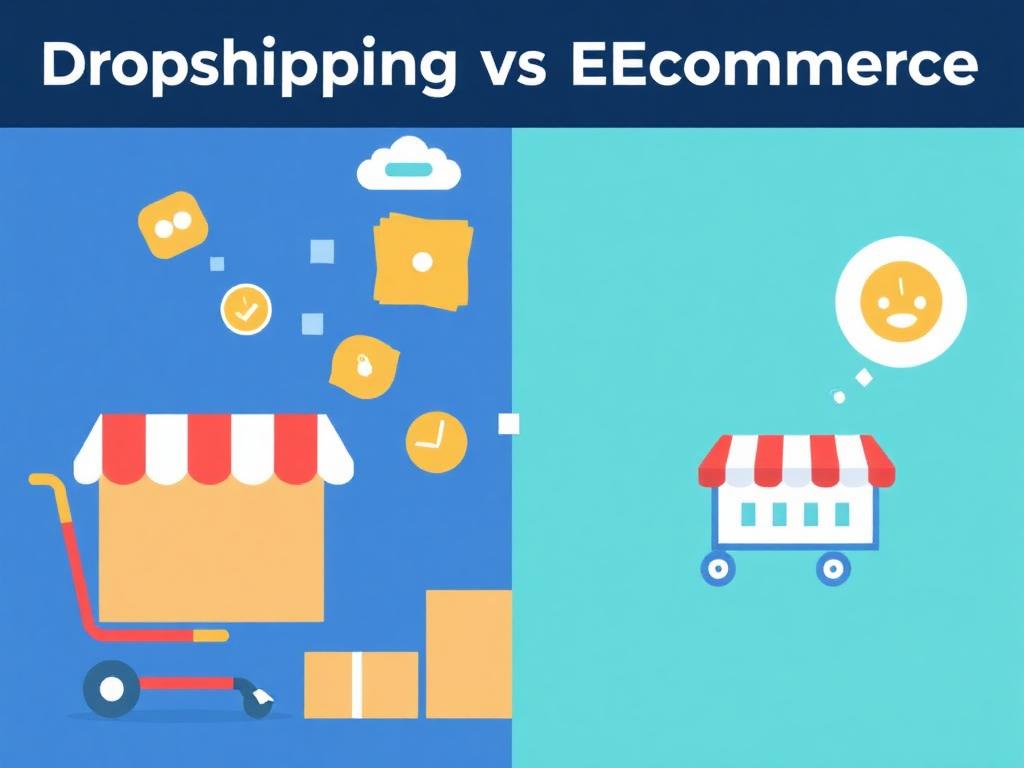Starting an online business can be an exciting venture, but it also comes with its own set of challenges. Two popular business models—drop shipping and traditional ecommerce—each have unique hurdles that entrepreneurs must navigate. Understanding these challenges is crucial for making informed decisions and setting your business up for success. In this blog post, we’ll explore the key challenges associated with drop shipping and ecommerce, helping you determine which model may be the best fit for you.
Challenges of Drop shipping
1. Supplier Reliability
One of the most significant challenges in drop shipping is finding reliable suppliers. Since you don’t handle the products directly, you depend on third-party suppliers for inventory and shipping. If a supplier fails to deliver on time or provides low-quality products, it can lead to customer dissatisfaction and damage your brand’s reputation.
2. Lower Profit Margins
Drop shipping often comes with lower profit margins compared to traditional ecommerce. Since you’re purchasing products on a per-order basis from suppliers, you may not benefit from bulk pricing. This can make it challenging to compete on price, especially in saturated markets.
3. Inventory Management Issues
While drop shipping eliminates the need for you to manage inventory physically, it can still lead to challenges. If a supplier runs out of stock, you may not be able to fulfill customer orders, leading to potential lost sales and frustrated customers. Keeping track of inventory levels across multiple suppliers can be complex and time-consuming.
4. Shipping Complications
Shipping can be a logistical nightmare in drop shipping. If you work with multiple suppliers, each with different shipping times and costs, it can complicate the fulfillment process. Customers may receive their orders at different times, leading to confusion and dissatisfaction.
5. Limited Control Over Branding
In drop shipping, you often have limited control over the branding and packaging of the products. Since the supplier handles fulfillment, your brand may not be represented in the way you envision. This can hinder your ability to create a cohesive brand experience for your customers.
Check Out: What is Quick Commerce
Challenges of Ecommerce
1. High Startup Costs
Traditional ecommerce typically requires a significant upfront investment. You need to purchase inventory, which can be costly, especially if you’re starting with multiple product lines. This financial barrier can be daunting for new entrepreneurs.
2. Inventory Management
Managing inventory can be a complex and time-consuming task. You need to keep track of stock levels, reorder products, and handle storage. Poor inventory management can lead to overstocking or stockouts, both of which can negatively impact your bottom line.
3. Logistics and Fulfillment
Handling logistics and fulfillment can be challenging, especially as your business grows. You’ll need to manage shipping, returns, and customer service, which can become overwhelming. Additionally, ensuring timely delivery and maintaining a high level of customer satisfaction requires careful planning and execution.
4. Risk of Unsold Inventory
One of the significant risks in traditional ecommerce is the potential for unsold inventory. If certain products don’t sell as expected, you may be left with excess stock that ties up your capital. This can lead to financial strain and the need for discounting to clear out inventory.
5. Market Competition
The ecommerce landscape is highly competitive, with numerous businesses vying for consumer attention. Standing out in a crowded market requires effective marketing strategies, unique branding, and a strong value proposition. This can be particularly challenging for new entrants without established brand recognition.
Conclusion
Both drop shipping and traditional ecommerce come with their own set of challenges, and understanding these hurdles is essential for success.
-
Drop shipping offers low startup costs and minimal inventory management but presents challenges related to supplier reliability, lower profit margins, and shipping complications.
-
Ecommerce provides greater control over branding and potentially higher profit margins but requires significant upfront investment, effective inventory management, and logistics handling.
Ultimately, the choice between drop shipping and traditional ecommerce depends on your business goals, resources, and willingness to navigate the associated challenges. By carefully considering these factors and preparing for the obstacles ahead, you can set your online business on a path to success.
